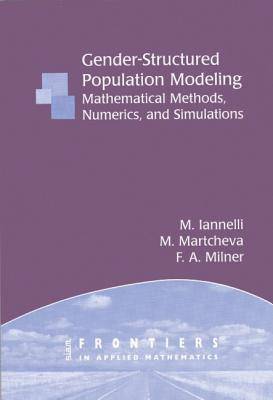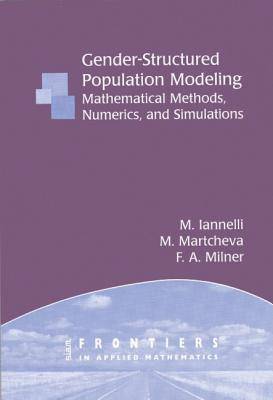
Door een staking bij bpost kan je online bestelling op dit moment iets langer onderweg zijn dan voorzien. Dringend iets nodig? Onze winkels ontvangen jou met open armen!
- Afhalen na 1 uur in een winkel met voorraad
- Gratis thuislevering in België vanaf € 30
- Ruim aanbod met 7 miljoen producten
Door een staking bij bpost kan je online bestelling op dit moment iets langer onderweg zijn dan voorzien. Dringend iets nodig? Onze winkels ontvangen jou met open armen!
- Afhalen na 1 uur in een winkel met voorraad
- Gratis thuislevering in België vanaf € 30
- Ruim aanbod met 7 miljoen producten
Zoeken
Gender-Structured Population Modeling
Mathematical Methods, Numerics, and Simulations
M Ianelli, M Martcheva, F A Milner
€ 78,45
+ 156 punten
Omschrijving
Gender-Structured Population Modeling: Mathematical Methods, Numerics, and Simulations gives a unified presentation of, and mathematical framework for, modeling population growth by couple formation. It provides an overview of both past and present modeling results. The book provides results on model analysis, gives an up-to-date review of mathematical demography, discusses numerical methods, and puts deterministic modeling of human populations into historical perspective. The authors describe several models and derive the theoretical results that demonstrate the validity of these models. The numerical methods for approximating the solutions of the differential models - the equivalent of creating discrete simulators - are delineated. Simulation results are compared with actual demographic data to show some of the difficulties concerning the availability of data and to show that mathematical demography provides reasonable qualitative and quantitative estimates. The models in this book can be applied to different sets of data.
Specificaties
Betrokkenen
- Auteur(s):
- Uitgeverij:
Inhoud
- Aantal bladzijden:
- 184
- Taal:
- Engels
- Reeks:
- Reeksnummer:
- nr. 31
Eigenschappen
- Productcode (EAN):
- 9780898715774
- Verschijningsdatum:
- 1/04/2005
- Uitvoering:
- Paperback
- Formaat:
- Trade paperback (VS)
- Afmetingen:
- 152 mm x 228 mm
- Gewicht:
- 344 g

Alleen bij Standaard Boekhandel
+ 156 punten op je klantenkaart van Standaard Boekhandel
Beoordelingen
We publiceren alleen reviews die voldoen aan de voorwaarden voor reviews. Bekijk onze voorwaarden voor reviews.











